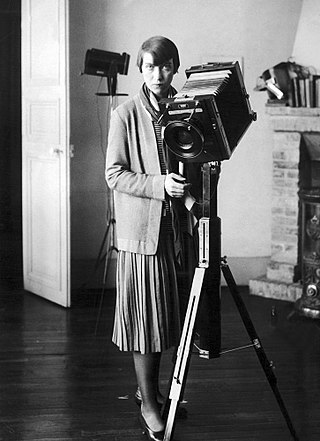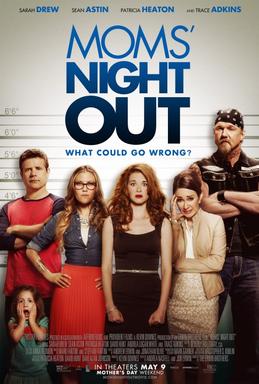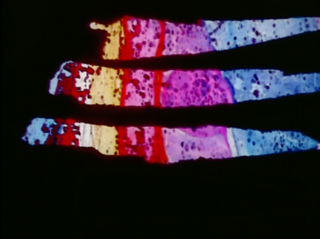
Berenice Alice Abbott was an American photographer best known for her portraits of cultural figures of the interwar period, New York City photographs of architecture and urban design of the 1930s, and science interpretation of the 1940s to the 1960s.
An underground film is a film that is out of the mainstream either in its style, genre or financing.

Gwendolyn Margaret MacEwen was a Canadian poet and novelist. A "sophisticated, wide-ranging and thoughtful writer," she published more than 20 books in her life. "A sense of magic and mystery from her own interests in the Gnostics, Ancient Egypt and magic itself, and from her wonderment at life and death, makes her writing unique.... She's still regarded by most as one of the best Canadian poets."

BolexInternational S. A. is a Swiss manufacturer of motion picture cameras based in Yverdon located in Canton of Vaud, the most notable products of which are in the 16 mm and Super 16 mm formats. Originally Bol, the company was founded in 1925 by Charles Haccius and Jacques Bogopolsky, the company's name having been derived from Bogopolsky's name. In 1923 he presented the Cinégraphe Bol at the Geneva fair, a reversible apparatus for taking, printing, and projecting pictures on 35 mm film. He later designed a camera for Alpa of Ballaigues in the late 1930s.

Wheeler Winston Dixon is an American filmmaker and scholar. He is an expert on film history, theory and criticism. His scholarship has particular emphasis on François Truffaut, Jean-Luc Godard, American experimental cinema and horror films. He has written extensively on numerous aspects of film, including his books A Short History of Film and A History of Horror. From 1999 through the end of 2014, he was co-editor, along with Gwendolyn Audrey Foster, of the Quarterly Review of Film and Video. He is regarded as a top reviewer of films. In addition, he is notable as an experimental American filmmaker with films made over several decades, and the Museum of Modern Art exhibited his works in 2003. He taught at Rutgers University, The New School in New York, the University of Amsterdam in the Netherlands, and as of May 2020, is the James E. Ryan professor emeritus of film studies at the University of Nebraska in Lincoln.

Gwendolyn Audrey Foster is an experimental filmmaker, artist and author. She is Willa Cather Professor Emerita in Film Studies. Her work has focused on gender, race, ecofeminism, queer sexuality, eco-theory, and class studies. From 1999 through the end of 2014, she was co-editor along with Wheeler Winston Dixon of the Quarterly Review of Film and Video. In 2016, she was named Willa Cather Endowed Professor of English at the University of Nebraska at Lincoln and took early retirement in 2020.
Mary Ellen Bute was a pioneer American film animator, producer, and director. She was one of the first female experimental filmmakers, and was the creator of some of the first electronically generated film images. Her specialty was visual music; while working in New York City between 1934 and 1958, Bute made fourteen short abstract musical films. Many of these were seen in regular movie theaters, such as Radio City Music Hall, usually preceding a prestigious film. Several of her abstract films were part of her Seeing Sound series.

Warren Sonbert was an American experimental filmmaker whose work of nearly three decades began in New York in the mid-1960s, and continued in San Francisco throughout the second half of his life. Known for the exuberant imagery of films such as Carriage Trade and especially for their intricate and innovative editing, he has been described as "the supreme Romantic diarist of the cinema" as well as "both a probing and playful artist and a keen intellect reveling in the interplay between all the creative arts."
Ann Smyrner was a Danish actress who was active in the 1960s in Italy, the United States, Austria and West Germany. She played in adventure, comedy, science fiction, crime, and horror movies, among which are the Sidney Pink science fiction movies Reptilicus and Journey to the Seventh Planet.
Amy Taubin is an American author and film critic. She is a contributing editor for two prominent film magazines, the British Sight & Sound and the American Film Comment. She has also written regularly for the SoHo Weekly News, The Village Voice, The Millennium Film Journal, and Artforum, and used to be curator of video and film at the non-profit experimental performance space The Kitchen.

Storm de Hirsch (1912–2000) was an American poet and filmmaker. She was a key figure in the New York avant-garde film scene of the 1960s, and one of the founding members of the Film-Makers' Cooperative. Although often overlooked by historians, in recent years she has been recognized as a pioneer of underground cinema.
The Film-Makers' Cooperative is an artist-run, non-profit organization founded in 1961 in New York City by Jonas Mekas, Andy Warhol, Shirley Clarke, Stan Brakhage, Jack Smith, Lionel Rogosin, Gregory Markopoulos, Lloyd Michael Williams, and other filmmakers, for the distribution, education, and exhibition of avant-garde films and alternative media.
Babette Mangolte is a French cinematographer, film director, and photographer who has lived and worked in the United States since 1970.

Moms' Night Out is a 2014 American faith-based comedy film directed by the Erwin Brothers, and written by Jon Erwin and Andrea Gyertson Nasfell. The film stars Sarah Drew, Sean Astin, Patricia Heaton, and Trace Adkins. The film was released on May 9, 2014, in 1,044 theaters. The movie centers on three moms attempting to get away and have a nice night out together and the pandemonium that ensues as everyone's plans go awry. The film was shot in Birmingham, Alabama, and, though it experienced an overall negative reception, grossed $10.5 million.
Sarah Pucill is a London-based film artist. Her work is distributed by LUX, London and LightCone, Paris. She is a Reader at University of Westminster. Central to her work is "a concern with mortality and the materiality of the filmmaking process". Much of her work appears within the restrictions of domestic spaces. In her "explorations of the animate and inanimate, her work probes a journey between mirror and surface".

Peyote Queen is an experimental short film by Storm de Hirsch, produced in 1965.

Marianne Hirsch is the William Peterfield Trent Professor of English and Comparative Literature at Columbia University and Professor in the Institute for Research on Women, Gender, and Sexuality.
Four Women is a 1975 short experimental film produced and directed by Julie Dash featuring music by Nina Simone.
Cecile Starr was an American filmmaker, educator and author who taught and wrote about moving pictures.










